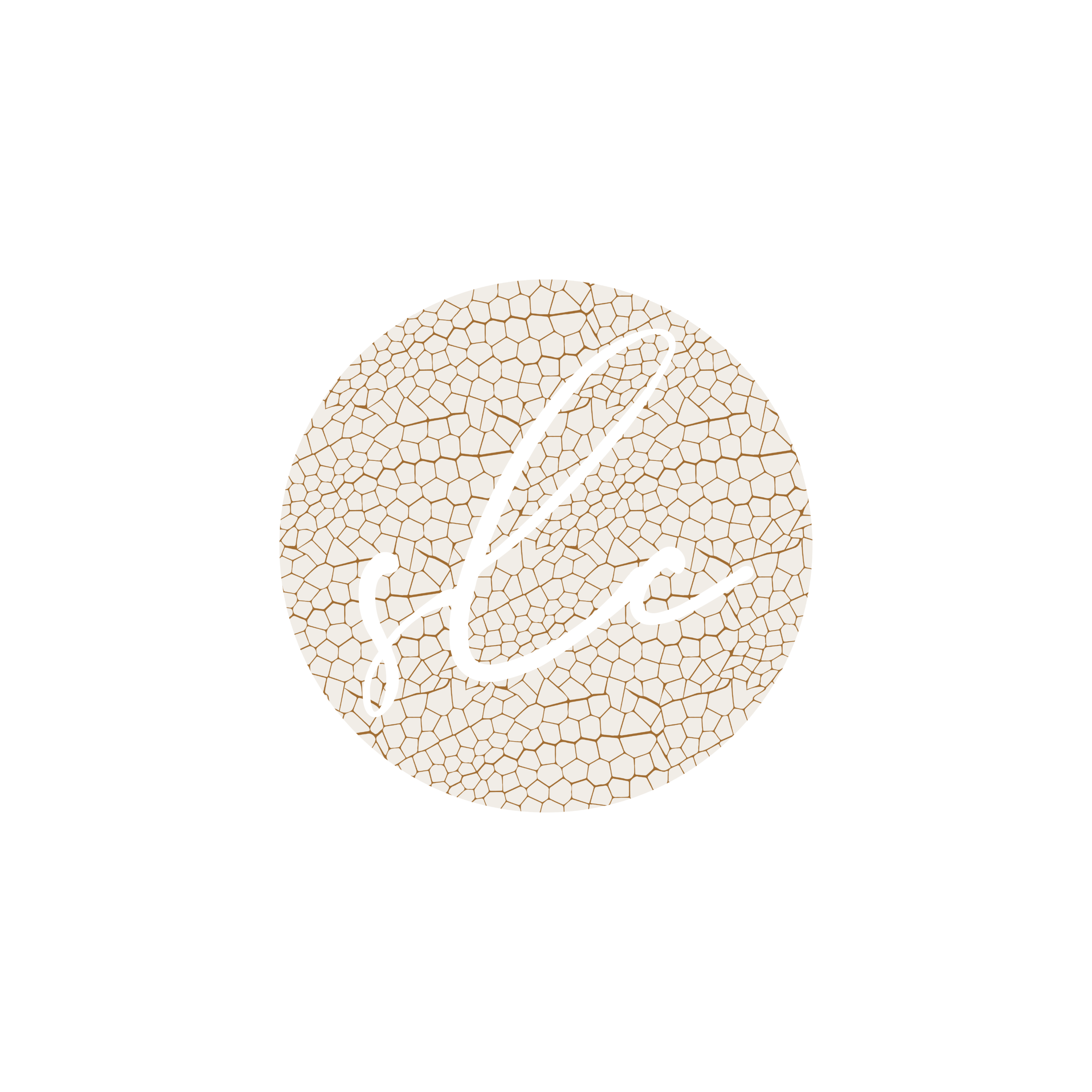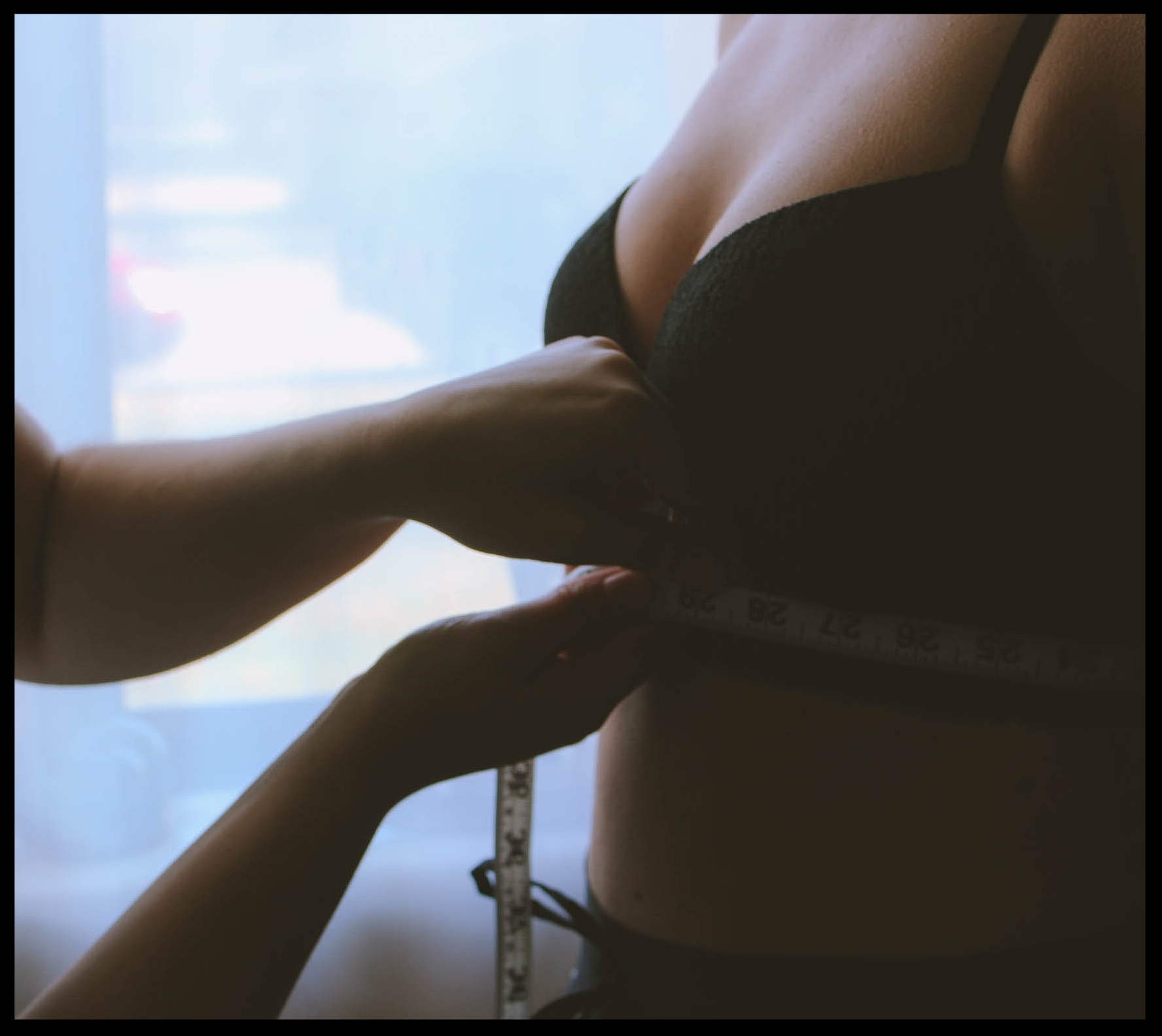What’s my bra size?
Bras not fitting right? The instructions below should help guide you in the right direction.
Since breast shapes, sizes and firmness vary, bra fitting is more art than science. There’s no magic formula, but there are some proven basics. Give them a try!
Preparing to Measure
Wear a lightly lined or non padded bra without a shirt on for the most accurate measurement. This does not include sports bras.
Step 1: Band Measurement
Wrap the measuring tape around your ribcage directly under your bust starting the measurement right where the underside of one of your breast hits your ribcage, keeping the measuring tape parallel to the floor. Make sure to measure as snugly as you would like your bra to fit. Jot down that number!
fit tip:
Try measuring your underbust comfortably snug (in a position of neutral breath, neither inhaling or exhaling) and your underbust as snug as possible (after a full exhale, as tight as you can measure). This will help you to be able to better determine your true band size and have a starting point for brands that are known to have a looser fit.
If you get an odd number I typically recommend rounding down as the band of your bra will naturally stretch out. If you aren't used to or don't care for an extremely tight fitting band, rounding up works as well.
Step 2: Bust/Cup Measurement
Measure the fullest part of your bust, again making sure that the measuring tape is parallel to the floor. The tape should be taut and secure, not overly snug. Jot down this number.
✏️Step 3: Your Estimated Bra Size✏️
Subtract the band measurement in Step 1 (prior to rounding) from the bust number in Step 2. The difference in inches will give you your cup size. Refer to the chart for a quick reference of various countries cup size conversions.
Now, use the number you got in Step 1 and pair it with the cup size. Ba-bam! You have your bra size.
Fit tip:
If you try on bras in the size you measured and the band feels loose, try the sister size of what you measured. Sister size? By that I mean “go down in the band size and up in the cup size.” For example, if you’re a measured 32D, your sister size is 30DD.
If you are struggling with the math, try out this bra fitting calculator.
🦄Step 4: Believe Your Size🦄
Many of you may be surprised at the bra size you find using these measurement instructions. Don’t knock it before you try it!
Society promotes the misconception that a small chest is an A or B, and that DDs are huge. However this is not always the case. Cup size is not static. The volume of the cup differs due to the band size so depending on fit, cut, and brand your cup size may vary.
The main support of your bra comes from the band. This is why you want the band to be as tight as is comfortable. Many women make the mistake of having too loose of a band which causes discomfort and unnecessary sagging.
Embrace your measured size as a starting point for sizing. There are so many additional variables to consider — projected vs. shallow, imbalanced breast sizes, varying levels of fullness — and I promise to educate you about them all.
🎉Work with these bra fitting basics to get “the gals” up where they belong so you can own and love the size you are! If you are super stuck you can always book a private fitting with me… happy to help!🎉



